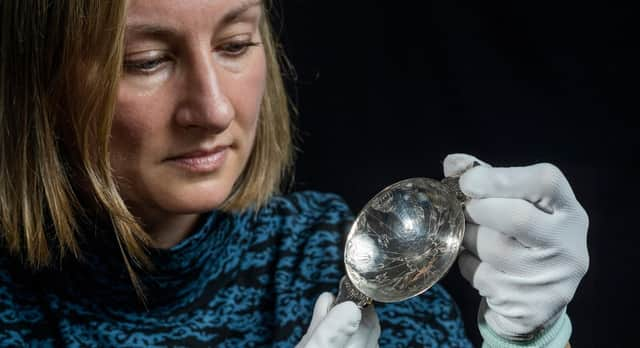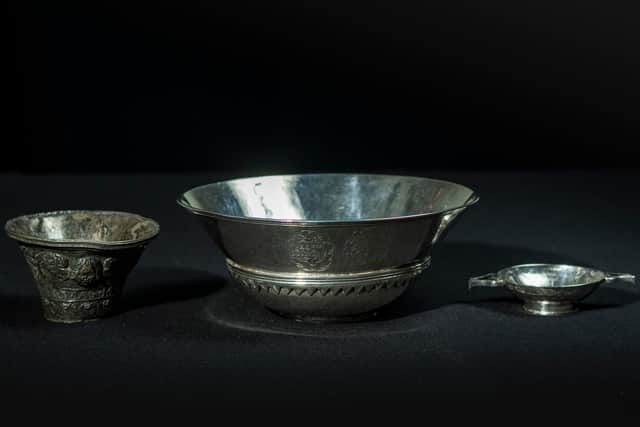Super rare 17th Century Scottish silver gifted to nation


A little quaich, a mazer – another type of communal drinking vessel – and a trumpet bell have been acquired by National Museums Scotland with the pieces representing craftsmanship in Aberdeen, Edinburgh and Glasgow.
Lyndsay McGill, Curator of Renaissance & Early Modern Scottish History at National Museums Scotland, said the items were a rare survival of the time given that silver was routinely melted down for money or to transform old pieces into more fashionable wares.
Advertisement
Hide AdAdvertisement
Hide Ad

Ms McGill said: “Scottish marked silver from the 1600s is scarce, especially examples of this quality. These objects are hugely significant, representing the capability and skill of Scottish silversmiths and revealing more about a fascinating period in Scottish history.”
She said the museum was delighted to accept the gift from Rosemary Haggarty, whose late husband Ron was an Edinburgh-based jeweller and well regarded collector of Scottish silver artefacts.
The silver quaich is an item of 17th century luxury, elaborately engraved with tulips and exotic birds. One of the finest remaining pieces by skilled Aberdeen goldsmith William Scott, its diminutive size suggests it was used to share potent beverages such as whisky or sherry.
The Bell of Cowcaddens Mazer is the earliest of the three silver items and was made in Edinburgh around 1613-15.
Once a popular communal drinking vessel, only nine Scottish examples of mazers are known to survive and just two of these are made entirely from silver. The vessels are more commonly made from wood and finished with a silver rim.
The Cowcaddens Mazer was owned by the Provost of Glasgow and would have been passed from person to person to secure bonds of friendship and political alliances.
The silver trumpet bell is the only surviving section of a long ceremonial trumpet. Engraved with the arms of the Cassillis family from Ayrshire, it would have been used during state and civic rituals and is one of just three Scottish trumpets from the 1600s still in existence.
Ms McGill said: “These items are so rare as silver was generally melted down and recycled into either hard cash or fashionable pieces.
Advertisement
Hide AdAdvertisement
Hide Ad"We view silver and gold in a slightly different way today. Then, the value was primarily in the weight and the quality of the metal. If you needed money, you would go and cash in your silver.”
Ms McGill added: “The Scots were canny. Their silver and gold was there for money if they needed it.”
In the 1640s, the war committee of the Covenanters had powers to collect silver and gold from the public in order to secure funding for their cause.
Ms McGill added that silver and gold also served as expressions of fashion and good taste for members of society keen to show off their standing in social settings.
But as items fell out of fashion, it was the norm to have these items remade into something more desirable, making the survival of the three items now gifted to the museum all the more remarkable.
Ms McGill added that silver hallmarking was the oldest system of consumer protection in Scotland and introduced in 1458 to assure quality amid concerns it was being mixed with too much copper or tin.
